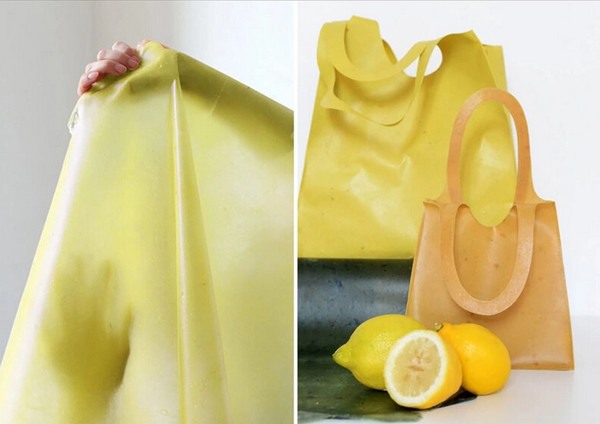Designers Johanna Hehemeyer-Cürten and Lobke Beckfeld have produced a sustainable alternative to the paper bag – a reusable tote called Sonnet155. Using totes over single-use shopping bags can reduce your carbon footprint, as long as they’re made of sustainable materials.
To ensure that each bag breaks down into the soil or water, Sonnet155 is entirely made of biodegradable materials, specifically from the composite of two raw materials: pectin and cellulosic production waste from the textile industry.
 Image: Sonnet155
Image: Sonnet155
Pectin is a plant-based polysaccharide derived from fruit skin, while cellulosic production waste comes from cellulose, the primary cell wall found in plants. When these organic compounds are mixed to create Sonnet155, they form a sustainable, tough, gelatin-like tissue that can dissolve over time with consistent use. The material somewhat appears elastic but also looks and feels like leather.
The creators designed Sonnet155 to make an aesthetically pleasing, sustainable alternative to single-use paper and plastic bags that feels “like a treat rather than a burden.” Sonnet155 comes in a wide range of colors, including a beautiful phthalo blue, green, orange, lemon yellow, and lime.
Source: intelligentliving.co
